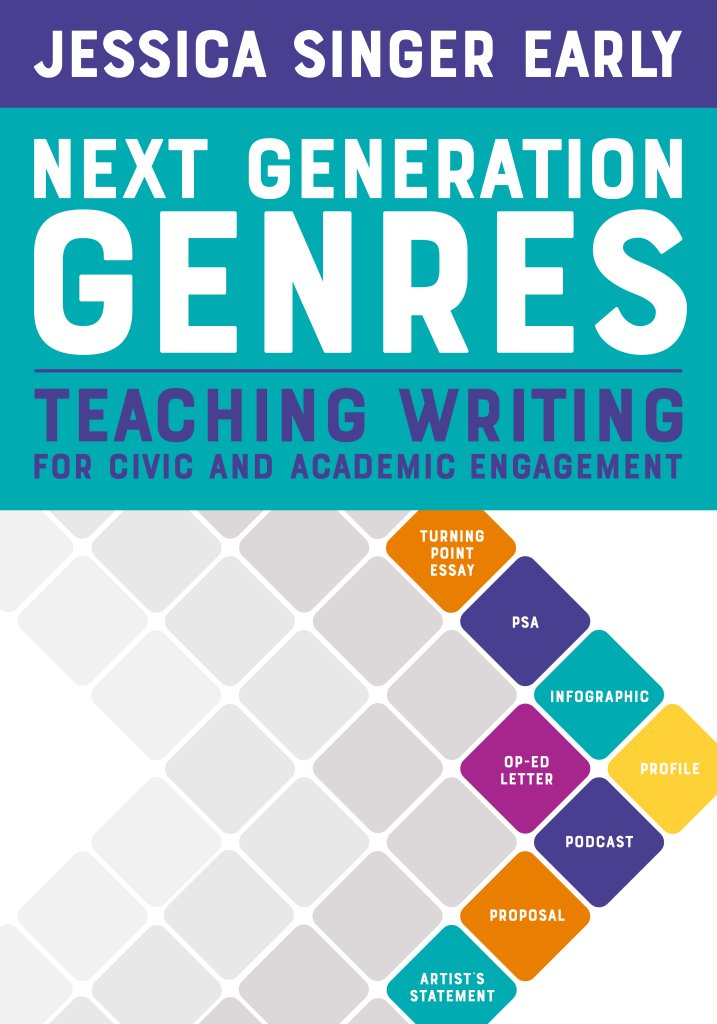Creating PSAs Engages Students in Writing
Having students design public service announcements for topics they care about can boost their digital literacy skills.
Your content has been saved!
Go to My Saved Content.Walk the hallways of any middle or high school, and you will see students immersed in their digital worlds. Our students write, read, listen, and speak every day using their cell phones, iPads, computers, AirPods, and watches. For many writing teachers, having students tap into these digital and multimodal literacy practices offers an exciting way to break away from print-only forms of written communication. For others, it can feel challenging to bring unfamiliar or ever-evolving multimodal genre forms into the formal curriculum. Cynthia Selfe (2008) writes, “The traditional language skills of reading and writing are, in short, converging with new multimodal literacy practices and feeding off each other in ways that make learning exciting and challenging for students and teachers from kindergarten to college” (p. 86). Whether eager or anxious about including digital literacies in our writing curriculum, it is impossible to refute the importance of exposing students to multimodal forms of writing and reading. We want to tap into their own digital skills and interests as part of preparing them to be 21st-century writers.
The National Council of Teachers of English (2019), has offered position statements calling for the inclusion of multimodal literacy practices (designing through different genres of communication, including linguistic, visual, and audio) into the curriculum. The PSA is a perfect example of a genre that allows students to take up digital forms of literacy. It also requires students to write and communicate persuasively, use research, develop a sophisticated understanding of their audience and purpose, and inform or teach. Additionally, the PSA allows students to write for a public audience beyond the teacher and their peers.

The PSA is a form of multimodal communication that persuades the audience to act, much like an advertisement, but with no fees attached. PSAs promote federal, state, and local government programs or nonprofit organizations. Iconic PSAs such as “This is your brain. This is your brain on drugs” from the 1980s or “Friends don’t let friends drive drunk” often help define a cultural or historical moment. For example, as the COVID-19 pandemic roared, highways had large, digitized PSAs encouraging people to get vaccinated. Health departments had launched public service campaigns and messaging to support vaccination, masking, social distancing, and testing. PSAs are used to encourage people to shift their behaviors.
They can be a source of controversy and public debate. For example, a highway PSA became controversial in Arizona because of the pro-vaccine messaging. The PSA message, “Want to return to normal? Get vaccinated,” outraged a state senator, who objected to it by posting a picture of it along with her opinion about it on social media. “Seen in Communist China today. Oops, I mean Arizona.” The next day, the PSA was removed from all highway signs (Arizona Republic, 2020). This is one example of how this genre can inform and stir reaction.
PSAs have been part of written and visual communication throughout history. They were created and distributed during the suffrage movement to encourage or discourage the vote for women and during the world wars to boost morale during incredibly challenging times in the country. They have also promoted public health campaigns such as anti-smoking, hand washing, and vaccination. You may want to share a brief history of this genre with students so they can see its cultural and historical relevance along with the shifting genre expectations.
Assignment Details
PSAs generally promote positive social behaviors through information and a call to action by mixing visual or digital and textual elements that share clear and concise messaging. They are published for television and video, blogs, digital and print media, radio, and billboards. The audience and purpose often determine the medium. Some students have limited to no experience with PSAs and how they operate in the world, but many have experience reading PSAs. Ask what PSAs they have seen recently. For example, I recently asked my first-year college students what knowledge they had reading or writing PSAs. While none of them had ever created a PSA of their own, many of them referred to ones they had seen on Twitter in connection to the Black Lives Matter movement. Others shared that they had seen PSAs in support of Palestine during a recent series of bombings in Gaza, and another student shared a PSA she had seen recently advocating for Pro-Life.
Hearing examples of the connections students have with this genre is a powerful way to share its relevance in their lives. I also share examples of PSAs from history, so students may see how this genre has evolved over time. A few great resources for these can be found through the Washington Post’s “The Top 10 PSAs of All Time,” the PSA Research Center’s “A Brief History of Public Service Advertising,” and the Poster House’s “A Brief History of PSA Posters.”
The PSA is an opportunity for students to dive into the research and writing of an individual or shared topic (e.g., the unhoused population) to figure out what they believe about it and, next, what they want people to know and do differently. You can start students thinking about their topics for the PSA assignment by asking them to respond to this prompt: “Something I know and believe about that I want others to know and believe is _____.”
A sentence starter is a quick and effective way to have students begin brainstorming topics and thinking about issues they care about deeply. Instead of having students choose the topic, you might want to select a current topic in the community that students see or hear about frequently or that feels particularly relevant in the present moment. Or you could pick an issue directly related to a book you are reading as a class, so the writing of the PSA is a direct extension of the reading curriculum.
When inviting students to create PSAs, you can offer the choice between making a print, video, audio, or combined video and audio PSA. This gives students some ownership of presenting their topics and allows them to play with and learn about various digital tools and design elements. You can also keep things simple and have students create analog PSA posters to display at school or in the community. An example of a PSA assignment for sixth–12th grades offers three choices in mode. Students can create a written and visual analog poster, a digital PSA video, or a recorded PSA audio. This may be modified to fit grade level and purpose and to include only one of the options for the final product if this feels more manageable in terms of teaching and assessment.
Excerpted from Next Generation Genres: Teaching Writing for Civic and Academic Engagement by Jessica Singer Early. Copyright © 2023 by Jessica Singer Early. Used with permission of the publisher, W. W. Norton & Company, Inc. All rights reserved.
